
Amazon taps SpaceX's Falcon 9 rocket to help launch Kuiper satellites
By Harshita Mary Varghese and Joey Roulette (Reuters) -Amazon on Friday said it booked three Falcon 9 launches with Elon
2023-12-02 07:49
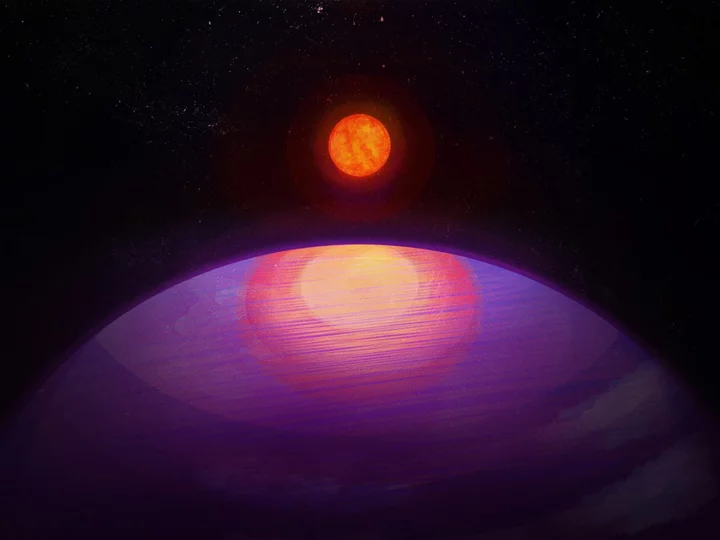
Scientists find huge planet that shouldn’t exist
Scientists have found a vast planet, so large that it should not exist. The planet appears to be too big for its sun, and therefore calls into question our understanding of how planets and solar systems form, according to the researchers who found it. The planet is more than 13 times as massive as Earth. It orbits around a star that is nine times less massive than our Sun. As such, the ratio between the two of them is 100 times higher than it is between the Earth and our sun. It is the first time that a planet with such a high mass has been seen orbiting a star with such a low amount of mass. And the discrepancy is so large that scientists thought such a planet could not exist. “This discovery really drives home the point of just how little we know about the universe,” said Suvrath Mahadevan, from Penn State. “We wouldn’t expect a planet this heavy around such a low-mass star to exist.” When stars are formed, out of large clouds of gas and dust, that material sticks with the star as a disc that orbits around it. Planets can then form out of that extra material, and go on to make a planetary system like our own. But science would suggest that the disc around the star in the new paper, known as LHS 3154, would not have enough material to make a planet so large. “The planet-forming disc around the low-mass star LHS 3154 is not expected to have enough solid mass to make this planet,” Mahadevan said. “But it’s out there, so now we need to reexamine our understanding of how planets and stars form.” The finding is reported in a new paper, ‘A Neptune-mass exoplanet in close orbit around a very low mass star challenges formation models’, published in Science. Read More Astronomers find unprecedented ‘disc’ around distant planet Planet too big for its sun ‘is challenging the idea of how solar systems form’ Elon Musk’s SpaceX rockets are punching holes in edge of space
2023-12-01 03:22
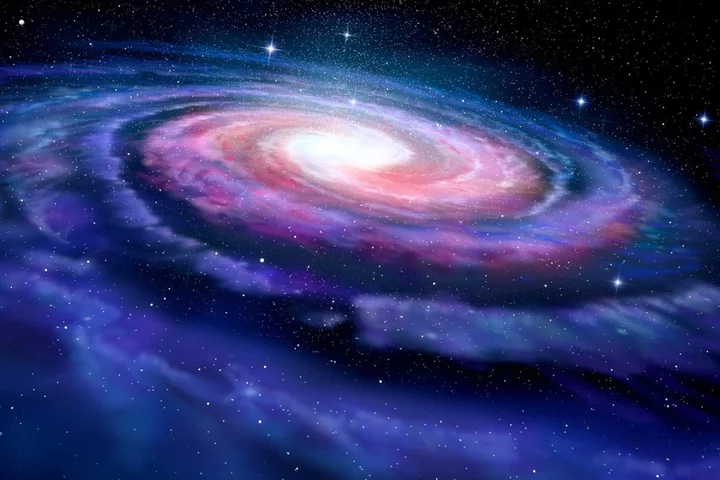
Astronomers detect life ingredient on the edge of the galaxy
Astronomers have discovered a key ingredient for life at the edge of our Milky Way galaxy. A team from the University of Arizona detected the presence of phosphorus while studying molecular clouds on the outskirts of the galaxy using giant radio telescopes in the US and Spain. Phosphorus is one of the so-called NCHOPS elements that make up the critical ingredients for life on Earth – nitrogen, carbon, hydrogen, oxygen, phosphorus and sulphur. All of the others have already been found on the edge of the galaxy, so the discovery of phosphorus has direct implications for the search for Earth-like planets around distant stars. Their observations of the chemical 74,000 light-years from the centre of the Milky Way calls into question our fundamental understanding of the universe, the researchers said. “The phosphorus we detected is at the edge of the galaxy, where it shouldn’t be,” said Lilia Koelemay, a doctoral student at the University of Arizona who led the research. Theories that could explain its presence include supernova stars, which are typically not found on the edge of galaxies, and low mass stars generating excess neutrons that are then added onto silicon atoms to create phosphorus. “To make phosphorus, you need some kind of violent event,” said Lucy Ziurys, Regents Professor of chemistry and biochemistry and astronomy at Steward Observatory. “It is thought that phosphorus is created in supernova explosions, and for that, you need a star that has at least 20 times the mass of the Sun. In other words, if you’re going to have life, you better be near a supernova, if that’s indeed the only source where phosphorus is created.” The detection of phosphorus at the edge of the galaxy could motivate studies of distant exoplanets, the researchers hope, which have not been properly considered until now due to the assumed lack of the chemical. The research team now plans to examine other molecular clouds in the far reaches of the Milky Way to see if they contain phosphorus. Their discovery was described in a paper, titled ‘Phosphorus-bearing molecules PO and PN at the edge of the galaxy’, in the scientific journal Nature. Read More Astronomers find unprecedented ‘disc’ around distant planet Astronomers discover new six-planet system China unveils ‘foldable’ Mars helicopter in mission to return samples to Earth China unveils ‘foldable’ Mars helicopter in mission to return samples to Earth New images of Mars released by Nasa’s Odyssey orbiter Scientists find planets moving around in strange ‘rhythm’
2023-11-30 22:55

Astronomers find unprecedented ‘disc’ around distant planet
Scientists have found the first ever disc structure around a star outside of our own Milky Way. The disc is around a young massive star forming in a stellar nursery called N180. It is within the Larg Magellanic Cloud, a dwarf galaxy that neighbours ours. The disc is 163,000 light years from Earth – meaning that it is not only the first to be detected outside of our galaxy, but also the most distant such disc ever seen. Lead author of the study, Dr Anna McLeod from Centre for Extragalactic Astronomy, Durham University said: “When I first saw evidence for a rotating structure in the ALMA data, I could not believe that we had detected the first extragalactic accretion disc; it was a special moment. “We know discs are vital to forming stars and planets in our galaxy, and here, for the first time, we’re seeing direct evidence for this in another galaxy. “We are in an era of rapid technological advancement when it comes to astronomical facilities. “Being able to study how stars form at such incredible distances and in a different galaxy is very exciting.” The findings are reported in a new article, ‘A likely Keplerian disk feeding an optically revealed massive young star’, published in Nature. Read More Scientists find planets moving around in strange ‘rhythm’ Astronomers discover new six-planet system Scientists have cooked ‘alien haze’ that could help find life
2023-11-30 00:16

Scientists find six planet system where stars orbit in rhythmic beat
Astronomers have found a planetary system with six different worlds that orbit in a strange rhythm. The set of planets move around their star in a rhythmic beat, scientists say, staying synchronised in a kind of dance. The findings could help shed more light on how planets form and evolve, the researchers say. The star is smaller, and slightly dimmer than the Sun, and the six “sub-Neptunes” - possibly smaller versions of Neptune in our solar system - move in a cyclic rhythm. According to the experts, this orbital waltz repeats itself so precisely it can be readily set to music. The star, HD110067, is 100 light-years away in the northern constellation of Coma Berenices, and had perplexed researchers for years. Now scientists, including those at the University of Warwick, have revealed the true architecture of this unusual system using Nasa and European Space Agency (Esa) spacecraft. The analysis was led by University of Chicago scientist Dr Rafael Luque, who said: “This discovery is going to become a benchmark system to study how sub-Neptunes, the most common type of planets outside of the solar system, form, evolve, what are they made of, and if they possess the right conditions to support the existence of liquid water in their surfaces.” The first indication of planets orbiting the strange star system came in 2020, when Nasa’s Transiting Exoplanet Survey Satellite (Tess) detected dips in the star’s brightness which suggested planets were passing in between the star and the spacecraft. A preliminary analysis revealed two possible planets - one with a year (the length of time it takes to complete one orbit around the star) of 5.64 days, and another with an unknown period at the time. Two years later, Tess observed the same star again, and analysis ruled out the original interpretation but presented two additional possible planets. Much was still unknown about the planetary system, until scientists across the world - including those at the University of Warwick - joined the investigation. They used data from Esa’s Characterising Exoplanet Satellite (Cheops), hoping to determine the orbital periods of these faraway planets. While multi-planet systems are common in the Milky Way, those in a tight gravitational formation known as “resonance” are observed by astronomers far less often. In this case, the planet closest to the star makes three orbits for every two of the next planet out - called a 3/2 resonance - a pattern that is repeated among the four closest planets. Among the outermost planets, a pattern of four orbits for every three of the next planet out (a 4/3 resonance) is repeated twice. Thomas Wilson, from the Department of Physics at the University of Warwick, said: “By establishing this pattern of planet orbits, we were able to predict other orbits of planets we hadn’t yet detected. “From this we lined up previously unexplained dips in starlight observed by Cheops and discovered three additional planets with longer orbits. This was only possible with the crucial Cheops data.” Researchers say the planets - two to three times the size of Earth - are likely to have been performing this same rhythmic dance since the system formed billions of years ago. Dr Luque said: “We think only about 1% of all systems stay in resonance, and even fewer show a chain of planets in such configuration.” Experts say orbitally resonant systems are extremely important to find because they tell astronomers about the formation and subsequent evolution of the planetary system. Planets around stars tend to form in resonance but can easily have their orbits thrown around. For example, a very massive planet, a close encounter with a passing star, or a giant impact event can all disrupt the careful balance. Therefore, multi-planet systems preserving their resonance are rare. HD110067 is the brightest known system with four or more planets. Since those planets are all sub-Neptune-sized with likely larger atmospheres, it makes them ideal candidates for studying using the James Webb Space Telescope (JWST) and the Esa’s future Ariel telescope. Mr Wilson added: “All of these planets have large atmospheres - similar to Uranus or Neptune - which makes them perfect for observation with JWST. “It would be fascinating to test if these planets are rocky like Earth or Venus but with larger atmospheres - solid surfaces potentially with water. “However, they are all much hotter than Earth - 170C to 530C - which would make it very difficult for life to exist.” Hannah Osborne, a PhD student at UCL’s Mullard Space Science Laboratory and a co-author of the study, said: “The system itself is a key discovery for exoplanet science: because all six planets are in a resonant chain we know that the architecture of the system can’t have changed much since its formation, so by studying HD110067 we get a rare window into the past to understand how these types of systems may have formed and evolved.” The findings are published in the Nature journal. Additional reporting by Press Association Read More Astronomers find unprecedented ‘disc’ around distant planet Astronomers discover new six-planet system Scientists have cooked ‘alien haze’ that could help find life Astronomers find unprecedented ‘disc’ around distant planet Astronomers discover new six-planet system Scientists have cooked ‘alien haze’ that could help find life
2023-11-30 00:15

Scientists cook ‘alien haze’ that could help us find extraterrestrial life
Scientists have cooked up the "alien haze" of distant planets, in an effort to help with the search for alien life. The haze is a simulation of the hazy skies that appear on water-rich exoplanets, or worlds outside of our solar system. That haziness can get in the way of observations of those planets, making it difficult to understand what is happening there. Haze can also affect conditions on the planet themselves. If the atmosphere has hazes or other particles then it can drastically change the temperature, amount of light an other factors – some of which might be make or break for alien life there. Scientists hope the homemade haze will let them better understand the atmospheres of other planets, and model how the planets themselves form and grow. They could allow us to better understand how the have distorts our picture of those planets – distortions that could give us the wrong understanding of the makeup of their atmospheres. Getting that wrong could mean potentially missing habitable worlds, for instance. The observations are used to come up with the estimates about the temperature and atmospheric conditions that are then used to determine whether a planet might be able to host alien life. “The big picture is whether there is life outside the solar system, but trying to answer that kind of question requires really detailed modeling of all different types, specifically in planets with lots of water,” said co-author Sarah Hörst, from Johns Hopkins University. “This has been a huge challenge because we just don't have the lab work to do that, so we are trying to use these new lab techniques to get more out of the data that we’re taking in with all these big fancy telescopes.” The team cooked up the haze using a custom-designed chamber in Hörst’s lab. The haze they made is formed out solid particles, suspended in gas, which changes how light interacts with the gas itself. To test the hazes they made, scientists shot ultraviolet light through them, measuring how much they absorbed and reflected. They found that hate haze matched the chemical signatures of a well-studied exoplanet. Scientists hope to develop yet more hazes, with different gas mixtures, that will let them better understand different atmospheres. The work is described in a new paper, 'Optical properties of organic haze analogues in water-rich exoplanet atmospheres observable with JWST', published in the journal Nature Astronomy. Read More SpaceX rockets are punching holes in atmosphere, causing blood-red ‘auroras’ Chinese rocket that slammed onto Moon may have carried mysterious undisclosed payload Nasa’s ‘Message in a Bottle’ will send your name into space
2023-11-29 21:52
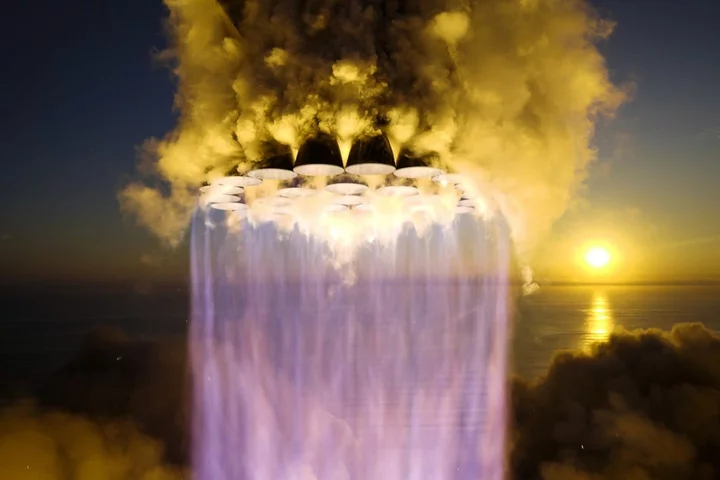
SpaceX hints next Starship launch attempt could be soon
SpaceX has hinted that flight tests of its Mars-bound Starship rocket system could begin to occur on a more frequent basis following a successful launch on Saturday. The tallest and most powerful rocket ever built lifted off from SpaceX’s Starbase facility in Boca Chica, Texas, on Saturday, seven months after the first launch attempt. Unlike the first attempt, both parts of the rocket were able to separate in mid-air without immediately exploding, while the newly-built launch pad was also able to withstand the force of the 33 Raptor engines firing simultaneously. “Just inspected the Starship launch pad and it is in great condition,” SpaceX boss Elon Musk posted on X on Sunday. “No refurbishment needed to the water-cooled steel plate for next launch. Congrats to SpaceX team and contractors for engineering and building such a robust system so rapidly!” The second flight test of the fully-stacked Starship rocket was beset by delays due to the high levels of debris from the destroyed launchpad and exploded rocket following the failed first attempt. Regulators said they would be working with SpaceX before a third flight test takes place, with the US Federal Aviation Administration confirming that no injuries or property damage was reported following Saturday’s launch. The fully-stacked Starship rocket system was the first to successfully perform a hot-stage separation, which saw the upper second stage launch away from the Super Heavy Booster mid-flight. Both parts of the rocket were destroyed shortly after they achieved separation, however SpaceX already has two Super Heavy boosters and three upper-stage vehicles currently undergoing preliminary testing, according to Next Spaceflight. Mr Musk has previously outlined his plans to build a fleet of hundreds of Starship rockets, with the hope of using them to establish a permanent human colony on Mars by 2050. SpaceX has already secured a multi-billion dollar contract with Nasa to develop Starship for the US space agency’s Artemis program, which will return humans to the surface of the Moon for the first time in 50 years. Read More SpaceX launches ‘zero fuel’ engine into space SpaceX Starship rocket loses contact after reaching space: Live updates Air Force officer breaks silence over ‘red, glowing’ UFO sighting: ‘Not a joke’
2023-11-20 22:23
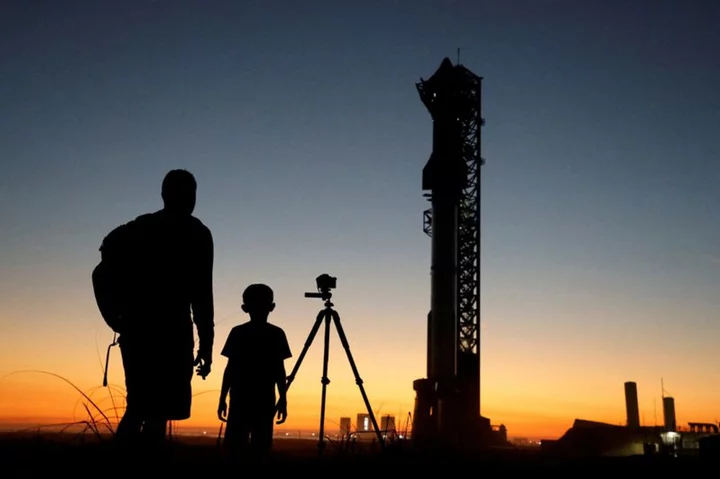
SpaceX Starship launched on test flight in Texas after last one blew up
By Joe Skipper, Joey Roulette and Steve Gorman BOCA CHICA, Texas (Reuters) -SpaceX's uncrewed spacecraft Starship, developed to carry astronauts
2023-11-18 21:53
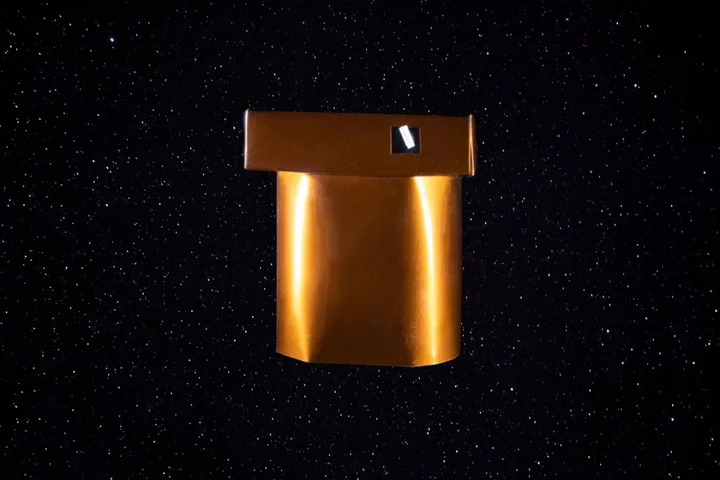
SpaceX launches ‘zero fuel’ engine into space
SpaceX has launched a new type of zero-fuel propulsion system into orbit, which its creators claim will revolutionise the space industry. The Quantum Drive engine, built by US startup IVO Ltd, was fitted on a microsatellite that entered orbit aboard SpaceX’s Transporter 9 mission, which lifted off from the Vandenberg Space Force Base in California. IVO claims that its technology is the world’s first commercially viable pure electric propulsion technology that works in space, drawing “limitless power for propulsion from the Sun”. It relies on a controversial theory called Quantized Inertia (QI) that challenges Isaac Newton’s Laws of Motion, with some physicists dismissing the technology as impossible. The QI theory was first proposed in 2007 by physicist Mike McCulloch, who drew on the mysterious properties of quantum mechanics to account for a new understanding of inertia as defined by Newton’s First Law of Motion. IVO chief executive Richard Mansell said his company performed 100 hours of vacuum chamber testing before the launch, during which the quantum drive produced a small amount of thrust. “Deploying Quantum Drive into orbit in a Rogue satellite on SpaceX Transporter 9 is a milestone for the future of space propulsion,” Mansell said. “Quantum Drive’s capability allows Rogue to produce new satellite vehicles with unlimited Delta V.” A pair of Quantum Drives are fitted to the BARRY-1 cubesat, which will take around one month to settle into its orbit before the next-generation propulsion system is activated in an effort to raise the satellites orbit by 100 kilometres. If successful, its creators say it will not only rewrite the critical principles of physics, but also form the foundation for a new era of space travel and exploration. “There are many things that have held back space exploration, one of them of course is power and propulsion,” said Mansell. “IVO’s quantum drive eliminates this propulsion problem by eliminating the fuel. By taking away the fuel, then you have essentially unlimited thrust.” Read More ‘It’s becoming like an airport’: How SpaceX normalised rocket launches
2023-11-17 23:21
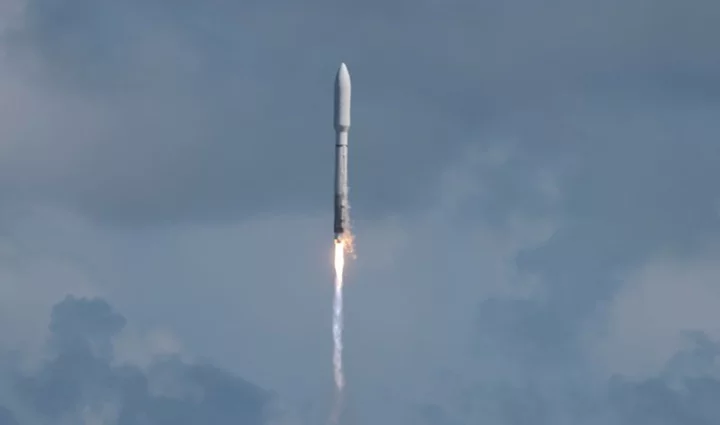
Amazon's prototype Kuiper satellites operate successfully
Amazon.com said on Thursday its two prototype satellites for its planned Kuiper internet network have been operating successfully,
2023-11-16 23:59

FAA approves license for SpaceX's second launch of Starship Super Heavy
By Joey Roulette (Reuters) -The U.S. Federal Aviation Administration on Wednesday granted Elon Musk's SpaceX a license to launch the
2023-11-16 07:28
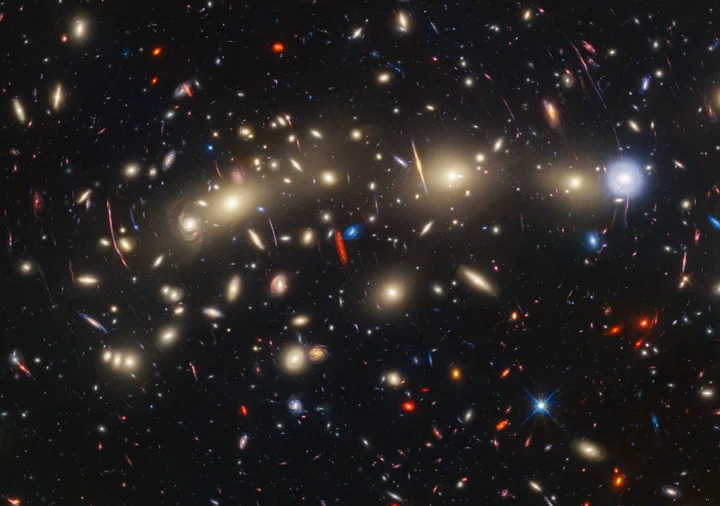
Nasa reveals the most colourful picture of the universe ever made
Nasa has released the most colourful picture of the universe ever made. The space agency created the image by combining data from the James Webb and Hubble space telescopes to capture light that has never been seen before in one image. The picture shows the galaxy cluster known as MACS0416, which is about 4.3 billion light years from Earth. The reds, blues and bright yellows of the picture represent one of the most comprehensive views of the universe ever taken, Nasa said. The colours represent the wavelengths of light captured, going from the shortest in blue to the longest in red. Those colours also help show the distances of those galaxies. Those galaxies that are closer and more active tend to be blue, while the red ones are further away – though some are also red because the vast amount of cosmic dust in the galaxy absorbs the blue of the light from stars. It was created by gathering both visible and infrared light captured by both telescopes. The original imagery was taken by Hubble in 2014, which captured some of the faintest and youngest galaxies ever detected, and it was then combined with Webb’s infrared data to look even further into the early universe. As well as making for a stunning image, researchers are already studying the data used to create it to examine the galaxy cluster and what it might mean for the universe as a whole. The Webb observations can be used to find “transients”, which are objects that change brightness over time. In the image there are some 14 transients – most of which are likely to be individual stars that are becoming brighter, with a minority that are thought to be supernovae. “We’re calling MACS0416 the Christmas Tree Galaxy Cluster, both because it’s so colorful and because of these flickering lights we find within it. We can see transients everywhere,” said Haojing Yan of the University of Missouri in Columbia, lead author of one paper describing the scientific results. One of them in particular is notable, and has been named Mothra. The object is being magnified by up to 4,000 by a process called gravitational lensing – and is notable because it was in both the new Webb images and the original Hubble ones. Scientists still don’t know how that could happen, since the alignment of galaxy clusters and stars needed to magnify something that much is delicate and would be expected to change. Scientists believe that the likely explanation is another unseen object that could be up to a million times bigger than our Sun and is unidentified. “The most likely explanation is a globular star cluster that’s too faint for Webb to see directly,” stated Jose Diego of the Instituto de Física de Cantabria in Spain, lead author of the paper detailing the finding. “But we don’t know the true nature of this additional lens yet.” The findings are detailed in two new papers, one to be published in The Astrophysical Journal and another that already appears in Astronomy & Astrophysics. Read More Nasa gets ‘puzzling’ data back from spacecraft exploring distant object Nasa sending VR headset up to ISS to treat astronaut’s mental health All-UK space mission will ‘push boundaries of human knowledge’ All-female Nasa astronaut team departs International Space Station on spacewalk Watch: Nasa astronauts step out of ISS for spacewalk Jupiter has a creepy ‘face’ in haunting Halloween photo by NASA
2023-11-10 03:25
